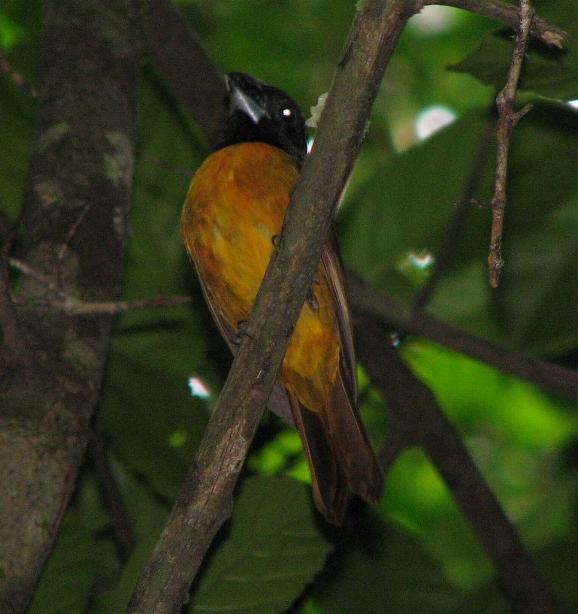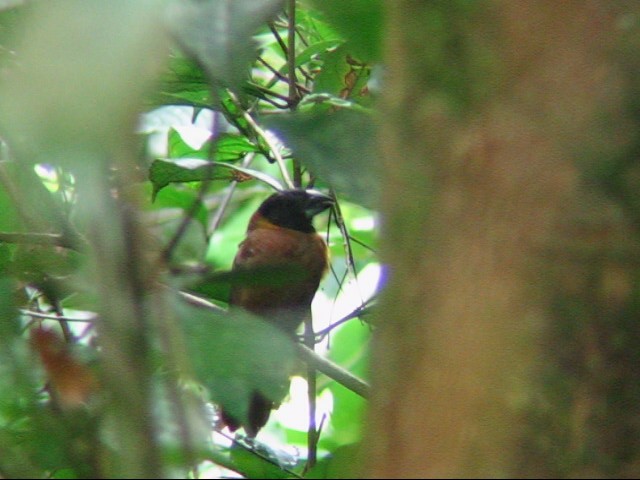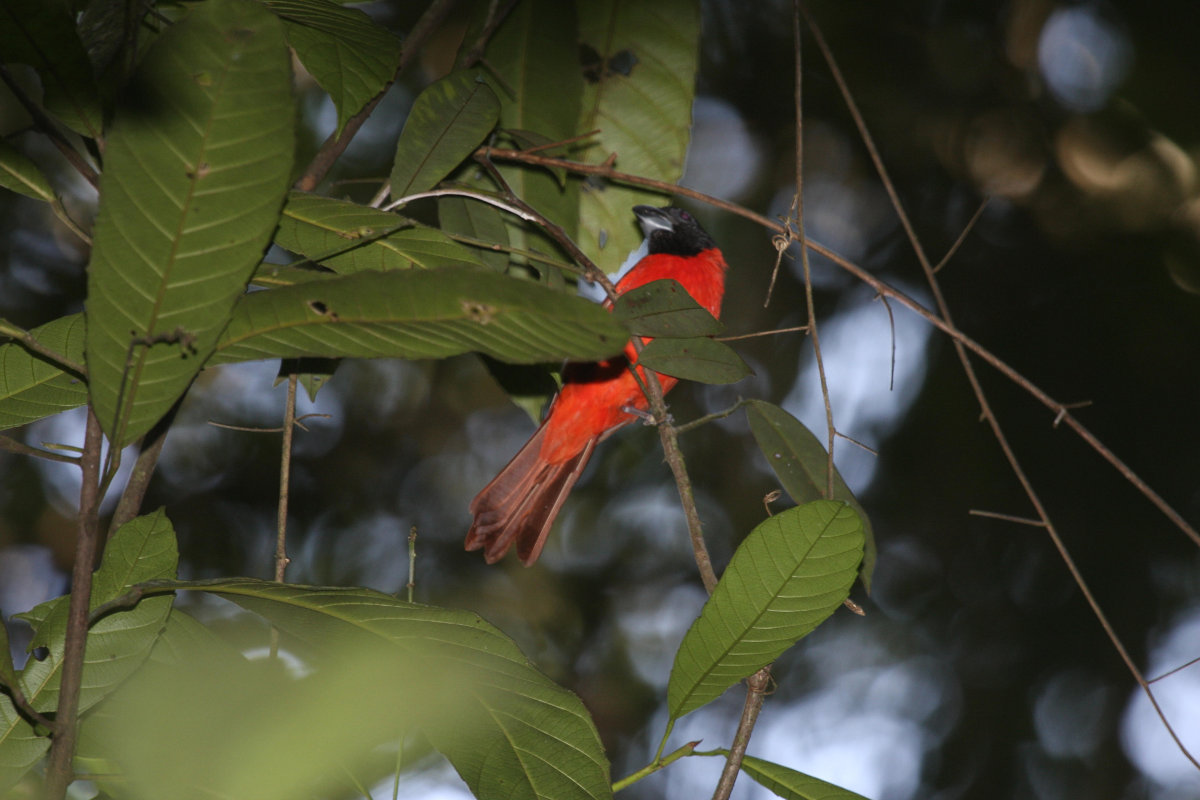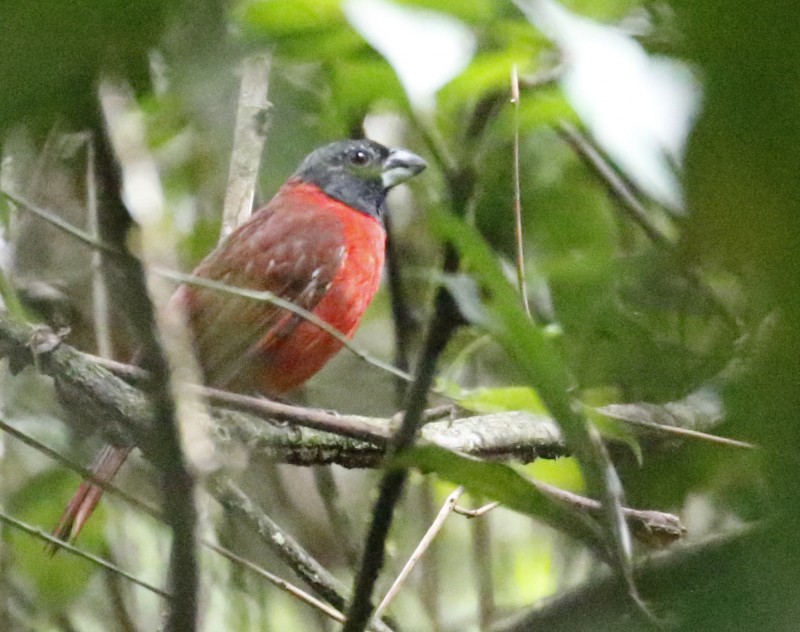 Red-and-black Grosbeak (Periporphyrus erythromelas)
Red-and-black Grosbeak (Periporphyrus erythromelas)
 Red-and-black Grosbeak (Periporphyrus erythromelas)
Red-and-black Grosbeak (Periporphyrus erythromelas) |
 |
| Pictures (click on them to enlarge) | ||
|---|---|---|
 © K.D. Dijkstra |  © Steven Wytema |  © Ward Vercruysse |
 © Klaas de Jong |
| Red-and-black Grosbeak: The female is yellow and green with the head totally black, the male is very red with a black head and he gave the species its name (as happened often). The bird above is probably a young male, not as red as can be. Despite its striking appearance the bird is not often seen as it stays mostly high in the shady part of trees, but it often sings. That way it is regularly heard on the Brownsberg. A picture of a Red-and-Black Grosbeak, photographed with flash by KD Dijkstra at the Brownsberg national park in February 2008. Then a photo made by Steven Wytema, also on the Brownsberg in 2005 and one by Ward Vercruysse in February 2008. Fred Pansa made a video of a Red-and-Black Grosbeak in November 2022. And a year later Sean Dilrosun saw another male. |
| Video (click the link or the 'play'-button to see) | ||
|---|---|---|
| Video recording of a Red-and-black Grosbeak © ; | Video recording of a Red-and-black Grosbeak © ; |
|
|
||||||||||||||||||||||||||||||||||||||||||||
| Observations through the year | Observations of breeding through the year |
|---|---|
| The 50 reported observations of this bird in Suriname, mainly for the last 50 years up to 2018, have been grouped by month. More birds on one day are counted as one observation. Of course, if the graph should depict the total number of birds seen, the differences between the months could be much more pronounced. | The reported breeding observations of this bird in Suriname. Most observations are about nest with eggs, some about fledglings, or feeding at a nest or the building of a nest. Of the about 5000 nests and eggs found for all species together, about 1/3 comes from the egg collection of Penard between 1896 and 1905. For some reason most collecting then was done in the first half of each year, so the shown distribution does not necessarily reflect the actual breeding preferences. The main dry season in Suriname is reckoned to be from half August to the end of November, the main wet season from half April to half August, but the the timing of begin and end does vary from year to year. Around March a second dry season often occurs. |